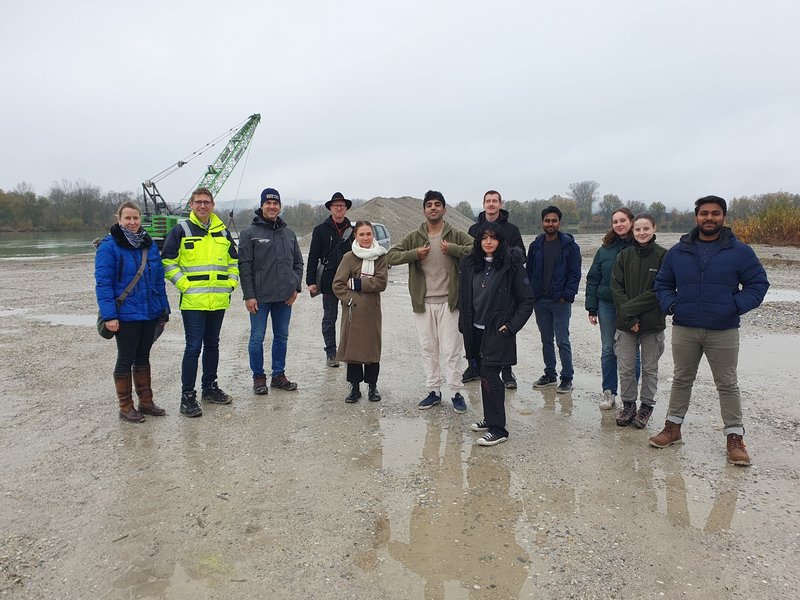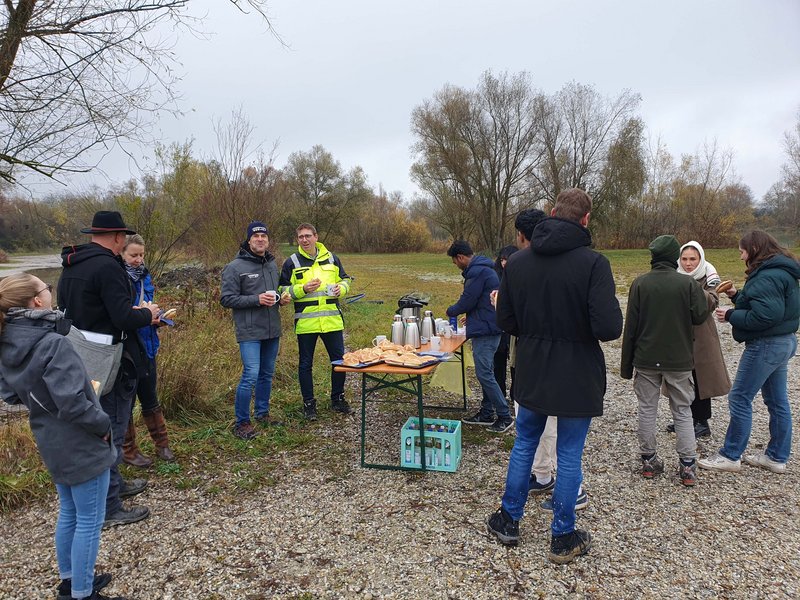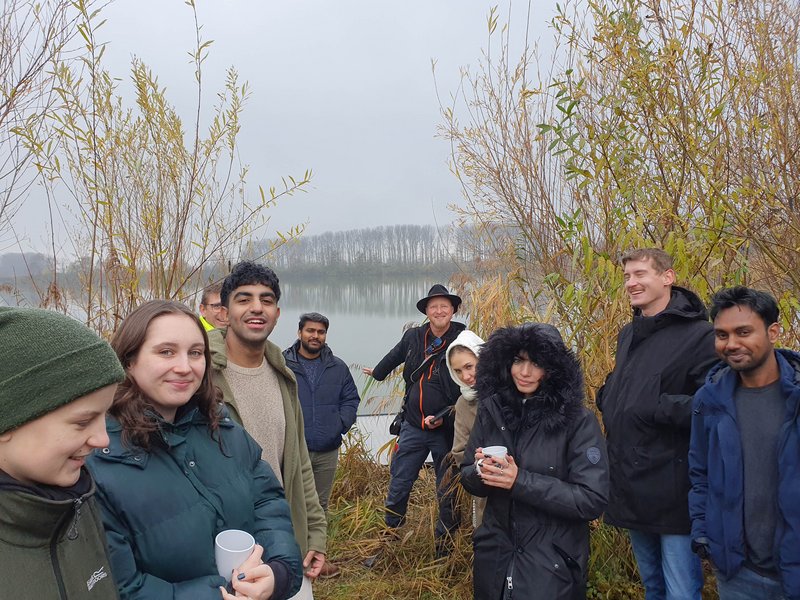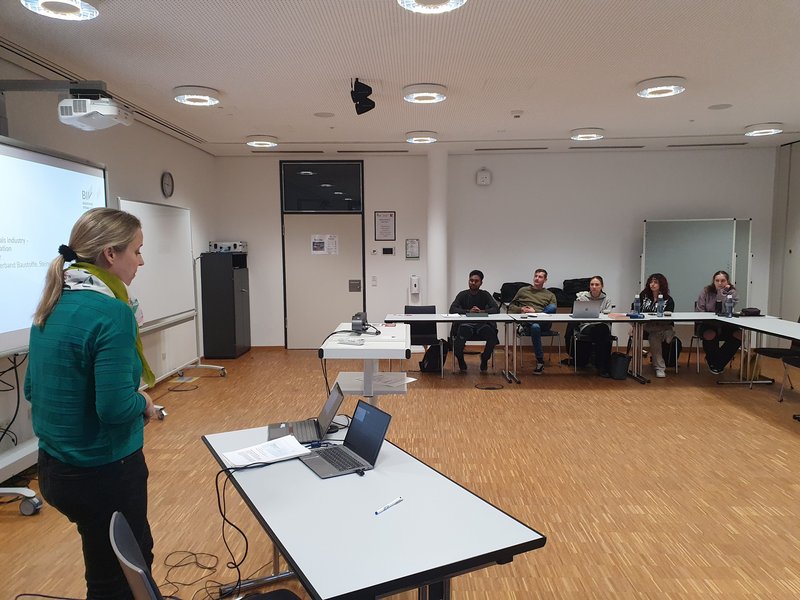The introduction to the topic of raw material extraction and sustainability as part of the seminar “Sustainable Development I: Principles” by Prof. Prasch was given by a lecture by Ms. Dr. Stephanie Gillhuber from the BIV together with the entrepreneur Andreas Moßandl from Dingolfing. The participants learned, that a typical new family home requires around 208 tons of sand, gravel and crushed stone and Bavaria in total needs 120 million tons per year, wherefrom only 20 million tons can be obtained from recycling.The next appointment was on site at the Mossandl gravel and concrete plant in Mamming near Dingolfing. The students experienced the process steps involved in extracting and processing raw materials right on site. Besides, they also learned how attention can be paid to nature conservation, particularly the preservation of biodiversity, on these intensively used areas. Bernhard Pellkofer from the landscape conservation association Dingolfing-Landau e.V. explained on a historical map of the Isar valley, that until the 19th century it was a whitewater river valley, shaped by the changing forces of the river, with extensive gravel and sand banks, as well as marsh and floodplain landscapes. Drainage for livestock farming began around 1900. With the later straightening of the Isar and the construction of dams and hydroelectric power plants, the groundwater level fell and intensive use of the land for agriculture followed. In the course of this land use change, valuable habitats were lost, especially for so-called pioneer plant species and their successors, amphibians and birds. These require unpopulated habitats such as gravel islands etc., among other things for brood care. Such habitats are still created in gravel pits. If these are consciously created and excluded from use, especially during the reproductive season, they will once again provide habitats for the above-mentioned pioneer plants and their successors and serve to protect local biodiversity.For the students, this excursion to an exemplary location was a great opportunity to get in touch with sustainable transformation topics, particularly in the discussions on the tension between technology, economics, environmental protection and social responsibility. At the end, the Mossandl company provided coffee and snacks for all participants.Images: Hochschule Landshut




